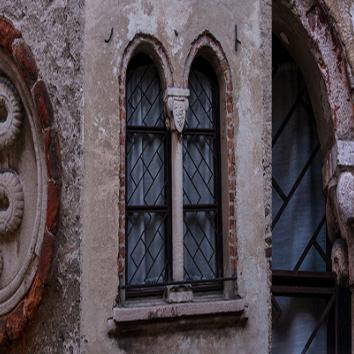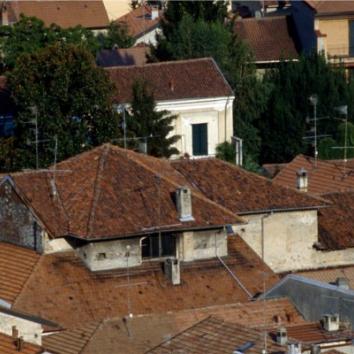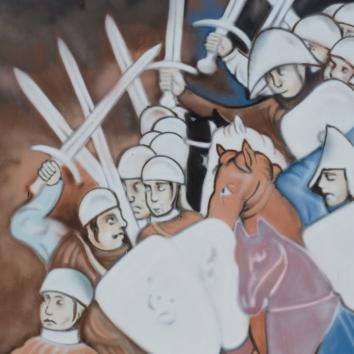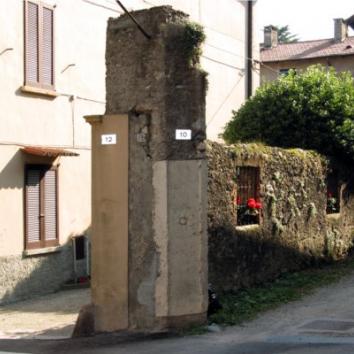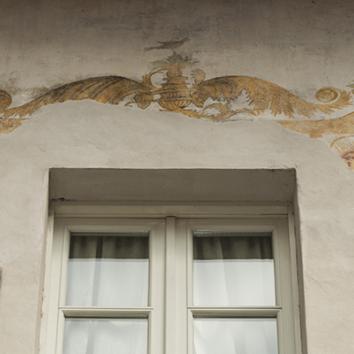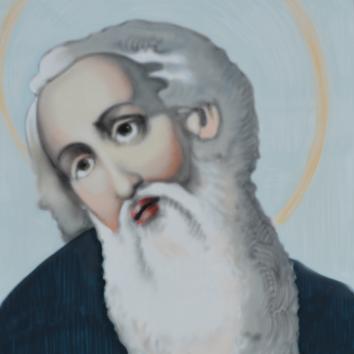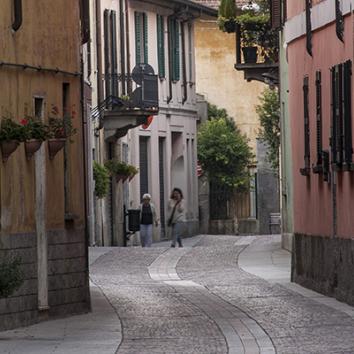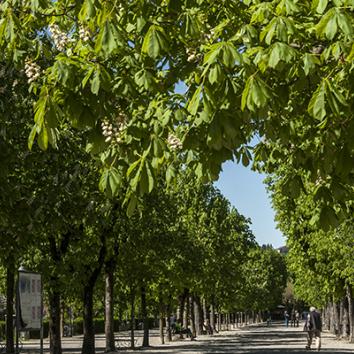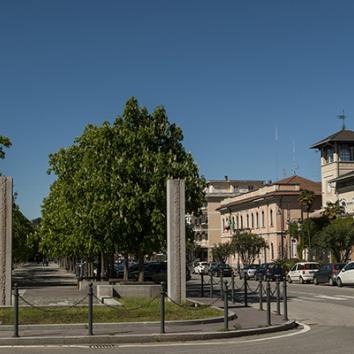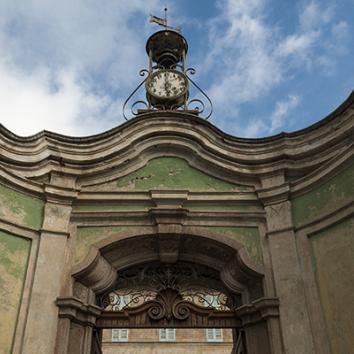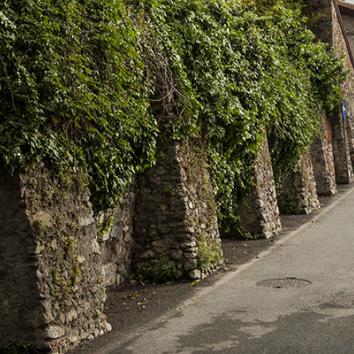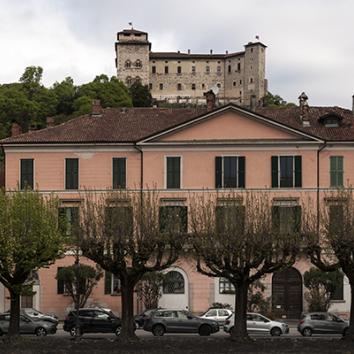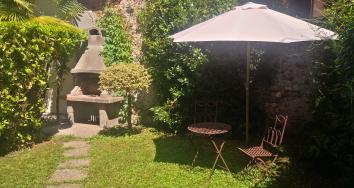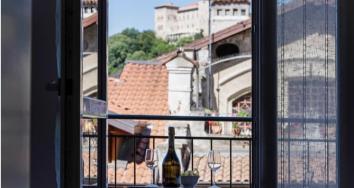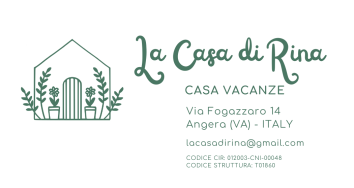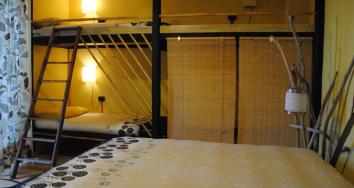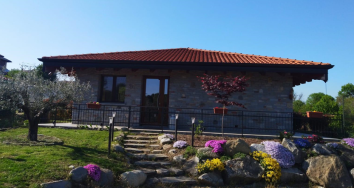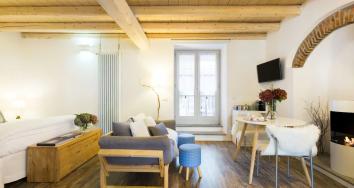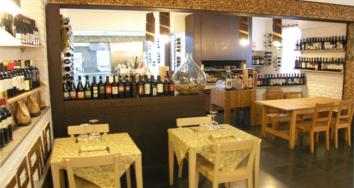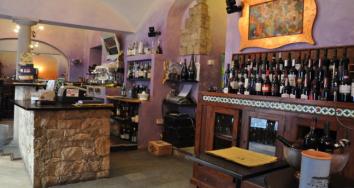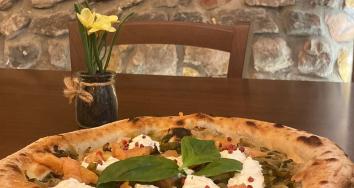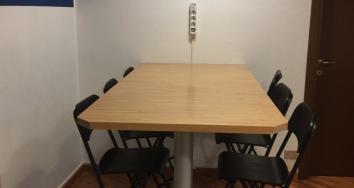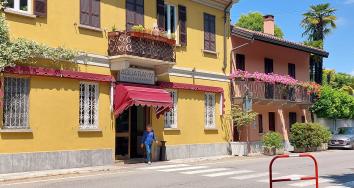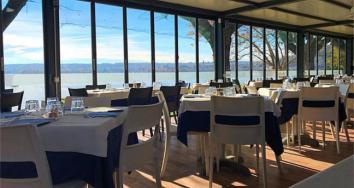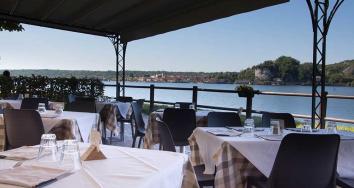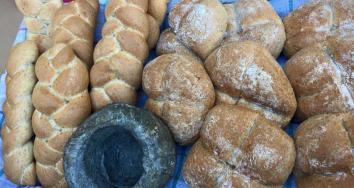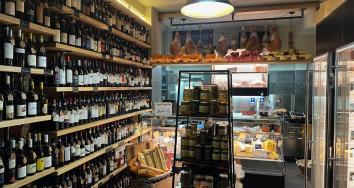Ludovico il Moro (by Andrea Ravo Mattoni)
Sito n. 56 del Museo Diffuso
Detail of wall painting from the House of Forni with a portrait of Ludovico Maria Sforza (Il Moro) in armour surrounded by a garland. Andrea Ravo Mattoni, 2019, spray paint on PVC canvas, 1.3 x 1.3 m. The painting was recently rediscovered and restored during rebuilding work in the House of Forni, in Via Greppi; it is not open to the public. It is located on the upper part of a wall in a room on the first floor which has paintings on all four walls. Portraits of men and women belonging to local noble families, including the Castiglioni, Besozzi and Sforza, are enclosed by garlands and flanked by their coats-of-arms; the Roman emperor Nerva (perhaps associated with legends regarding the Sforza family) is also shown. The portraits include Francesco I Sforza, Bianca Maria Visconti and Ludovico Maria Sforza, known as Il Moro. The coats-of-arms and portraits would appear to date to the late 1400s, just before the fall of Ludovico il Moro in 1499. Beneath them are decorative plant motifs joined by knotted ribbons, similar to frescoes by Leonardo da Vinci in the Sala delle Asse in Castello Sforzesco, Milan. Studies suggest that the house may have belonged to Ettore Besozzi and Clara Castiglioni and that the wall paintings were executed on the occasion of their wedding. The presence of Sforza coats-of-arms and portraits may also indicate that the building was the seat of the Captain of the Lake, a magistrate who controlled the shores of Lake Maggiore on behalf of the Duke of Milan. The Visconti's possessions on the lake, including the Rocca di Angera, passed to the Borromeo family in 1447. Ludovico il Moro tried to regain control of the Maggiore duchy by basing the Captain in Angera, giving it the status of 'città' (independent of the feudal system) in 1497 and thus guaranteeing its autonomy from the Borromeos. Moro also granted Angerans the right to hold one market and two fairs each year, one for cattle in spring, and one in September for the harvest, which is still celebrated today with parades of wagons. The wall paintings are currently being studied. See Angera Open-Air Museum Site 8 - www.angera.it


